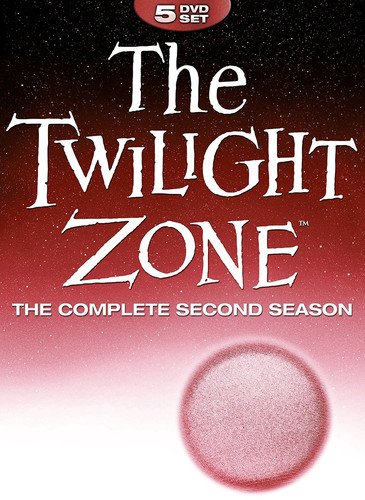
While the Writers Guild of America just recently voted Rod Serling’s The Twilight Zone the third best written series of all-time, viewers have long known how special this iconic anthology series was. Serling, who wrote 20 of the episodes this season, and his team of writers, which included Charles Beaumont, Richard Matheson, and George Clayton Johnson, told fascinating tales of science fiction and fantasy that appealed beyond fans of those genres because the stories were so identifiable in the way they spoke to the human condition and morality.
The Second Season earned Serling an Emmy for Outstanding Writing Achievement in Drama and the series was nominated for Outstanding Program Achievement in the Field of Drama and won the Hugo Award for Best Dramatic Presentation. Notable stories from this season include “Eye of the Beholder,” where a woman hopes plastic surgery will allow her to fit in society; “A Most Unusual Camera” that takes pictures of the future; “A Penny for Your Thoughts” finds a man (Dick York) develop the ability to read minds after a flip of a coin; an episode that is almost entirely silent finds an elderly woman (Agnes Moorehead) dealing with “The Invaders” in her attic; and possibly my favorite of the whole series, “The Night of the Meek,” where an alcoholic, department-store Santa brings a bit of joy into the lives of everyone he encounters. Other notable actors who appeared this season are John Carradine, Buddy Ebsen, Burgess Meredith, Don Rickles, Cliff Robertson, and William Shatner.
During this season, 29 episodes aired between the fall of 1960 and spring of 1961, seven less than the First Season. This reduction in shows was a cost-cutting measure by James Aubrey, a new executive at CBS, who also decided six episodes should be shot on videotape. They are “The Lateness of the Hour,” “The Night of the Meek,” “The Whole Truth,” “Twenty-Two,” “Static,” and “Long Distance Call.” These episodes not only have a different visual look to them because they were recorded on film from a monitor, but they were executed in a different manner as well. Instead of editing the videotape, the show was cut live in the studio, resulting in the episodes resembling plays from the early days of television. This new method saved just a minimal amount of money and was determined not worth the limitations put on the stories and their production, so the idea was dropped.
There were other notable changes between this season and the first. Serling went from voice-over narrator to being seen on screen. Marius Constant’s unsettling guitar-and-bongo theme was chosen over Bernard Herrmann’s theme. The opening visuals had been changed as had Serling’s introduction which now was:
You’re traveling through another dimension, a dimension not only of sight and sound but of mind; a journey into a wondrous land whose boundaries are that of imagination. That’s the signpost up ahead—your next stop, the Twilight Zone.
The DVD image looks good though there is some minor dirt and damage evident. The audio has some issues. For example, the levels of “Eye of the Beholder” are uneven, sounding as if part of it was re-recorded at a later time, and during “Lateness of the Hour,” a hiss can be heard at the beginning. The best part about this DVD collection is seeing Serling preview the next episode.
Although The Twilight Zone is one of those shows that always seems to be playing on some channel, this collection from Image Entertainment is well worth owning.